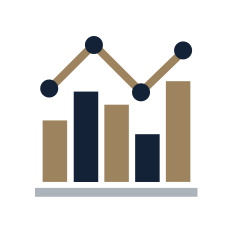Additional Cost of Living Benefit
Overview
In 1990, as a result of a social pact, the COLA mechanism was introduced.
This works by awarding an increase calculated on how much the cost of expenses of the average family in the country has increased in percentage terms.
But the expenses of an average family are different from those of a family with low income or that of pensioners.
For example, low-income families, on average spend 30% of their expenditure basket on food, while an average family requires an expenditure of 20%.
This means that for a low-income family, a change in the price of food is more important than it is for an average family.
The same applies to pensioners. Pensioners spend relatively more on medicines and food than an average family.
Taking into consideration such circumstances, whilst the COLA mechanism remains in force, the Government has introduced an additional mechanism as a Cost of Living Benefit.
What you’ll get
This mechanism works by calculating how much the COLA would have been if the expenditure basket used was that of low-income families or pensioners.
This increase is then compared to the one resulting from the COLA mechanism and if it is greater, the difference is included in the Cost of Living Benefit.
In 2023 and 2024 it results that the additional COLA is €2.91 per week more than the result of the COLA mechanism.
This benefit will continue to be paid every year and is not taxable.
The payments to eligible households will be paid in two installments (December 2023 and May 2024).
Should the difference the following year is less, the same additional COLA is awarded.
Please click here for a Schedule of Benefits Rates.
Eligibility
General eligibility criteria:
This benefit will be given to all households having an income adjusted for the number of people in the family that is below the equalized national median as defined by Eurostat.
This income is currently €18,155 (according to the latest SILC published by the NSO).
This means that a family with one person, for example, a widow, having an income of up to €18,155, qualifies.
A household consisting of two (2) people, for example, a pensioner couple, having an income of up to €27,232, are eligible.
A household composition of three (3) people, for example, a single parent with two children (one aged 14 or over) or a couple with one child under 14, qualify if the income does not exceed €32,679.
A household composition of four (4) people, for example, a couple with two children under the age of 14, qualifie if the income does not exceed €38,126.
A household composition of five (5) people, for example, a couple with a child over the age of 14 and two children under the age of 14, qualifies if the income does not exceed €47,203.
This exhibits that this mechanism is now helping a much wider cohort of households and not solely families at risk of poverty or vulnerable.
The amount of the benefit is calculated on the income of the families in 2022.
The benefit paid ranges between €100 and €1,500 per year for the Year 2024.
The amount depends on two factors: how much the equalized[1] family income is compared to the level of income that is 60% of the equalized national median (the at risk of poverty level, currently €10,893) and the number of persons in the household.
The lower the income, the higher the benefit.
For example, if a single person earns up to 40%[2] of 60% of the equalized national median (i.e. €4,357), the benefit is calculated at €2.91 per week x 100/40 x 52 weeks and a total of €378.30 per year is awarded.
In contrast, for a single person with an income of €18,155, which is 167%** of 60% of the equalized national median which is €10,893, the benefit is calculated at €2.91 x 100/167 x 52 weeks and will a total of €100 per year is awarded (theoretically €90.79).
If the household is formed of more than one person, the family income is adjusted to the number of people in the family by multiplying it by the number of eligible people (actual number not equalized).
Additionally, the more members forming the household composition, the higher the benefit. Children living in the family with an income exceeding €10,893 are excluded from the family so that their income does not penalize the household award.
[1] The mentioned percentage is obtained by utilising the €10,893 / the equalized family income and is rounded up to the nearest factor divided by 5%. For example, 43.5% is set at 45%; 49% is set at 50%.etc.
[2] The family income is divided by a number that is established on how many people form the household by granting the first adult a weight of 1.0, each additional adult including children aged 14 or older, a weight of 0.5, and children under 14 a weight of 0.3.
Examples of how much different families will benefit (these are to serve as a guide)
Widow or single person with an income of:
€8,000 per year will get you a benefit of €202 per year.
€10,000 per year will get you a benefit of €159 per year
€14,000 a year will get you a benefit of €121 a year
€16,000 per year will get you a benefit of €106 per year
€18,000 per year will get you a benefit of €100 per year
A couple, example pensioners, with an income of:
€10,000 a year will get you a benefit of €467 a year.
€12,000 a year will get you a benefit of €404 a year.
€15,000 a year will get you a benefit of €319 a year
€21,000 per year will get you a benefit of €242 per year
€24,000 per year will get you a benefit of €212 per year
€27,000 a year will get you a benefit of €191 a year
Single parent with two children (one aged 14 or over) or a couple with one child under 14 with an income of:
€10,000 a year will get you a benefit of €825 a year
€12,000 a year will get you a benefit of €701 a year.
€14,400 per year will get you a benefit of €606 per year.
€18,000 a year will get you a benefit of €478 a year
€21,000 a year will get you a benefit of €431 a year
€25,200 per year will get you a benefit of €363 per year
€28,000 a year will get you a benefit of €318 a year
€32,500 per year will get you a benefit of €287 per year
A family with 4 people, for example a couple with two children under 14, with an income of:
€14,000 a year will get you a benefit of €931 a year
€16,800 per year will get you a benefit of €807 per year.
€19,000 a year will get you a benefit of €712 a year
€21,000 a year will get you a benefit of €637 a year
€24,000 per year will get you a benefit of €576 per year
€29,400 per year will get you a benefit of €466 per year
€34,000 a year will get you a benefit of €404 a year
€38,000 per year will get you a benefit of €363 per year
A family with 5 people, for example a couple with a child over the age of 14 and two children under the age of 14, with an income of:
€15,000 per year will get you a benefit of €1,376 per year
€18,000 a year will get you a benefit of €1,164 a year.
€22,000 per year will get you a benefit of €946 per year
€26,000 per year will get you a benefit of €796 per year
€30,000 per year will get you a benefit of €688 per year
€34,000 per year will get you a benefit of €630 per year
€38,000 per year will get you a benefit of €560 per year
€45,000 a year will get you a benefit of €473 a year
Documentation required
General documentation:
- No documentation is required for this benefit, unless there is a need to apply as where indicated below.
How to apply
There is no need to apply for this benefit as all necessary information is collected by the Commissioner for Revenue Department and the Department of Social Security.
However, for cases not in receipt of a benefit from the Department of Social Security as from the Year 2022, the system is not informed of income for the necessary action, thus the applicant needs to apply by 30th September 2024, by clicking here.





